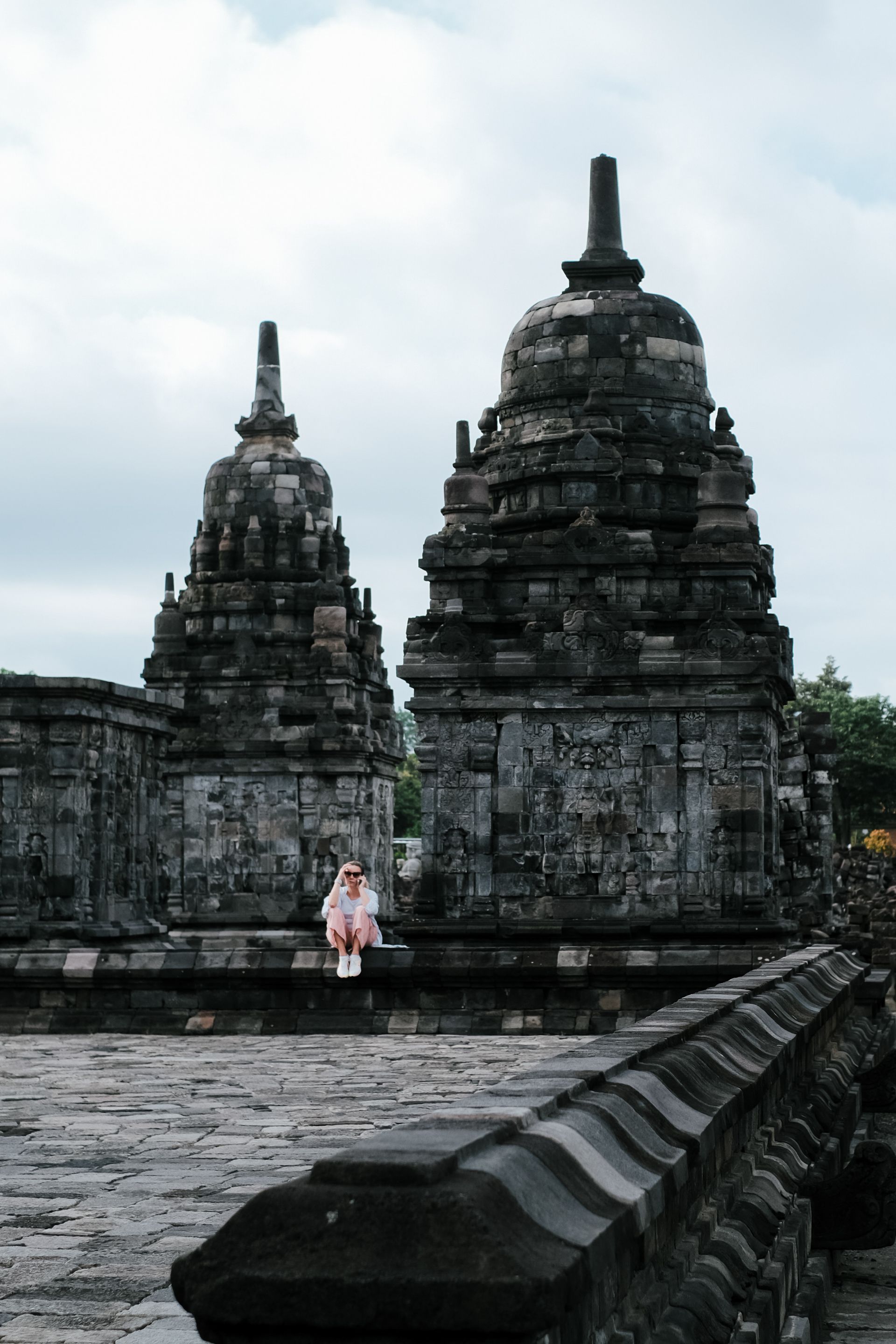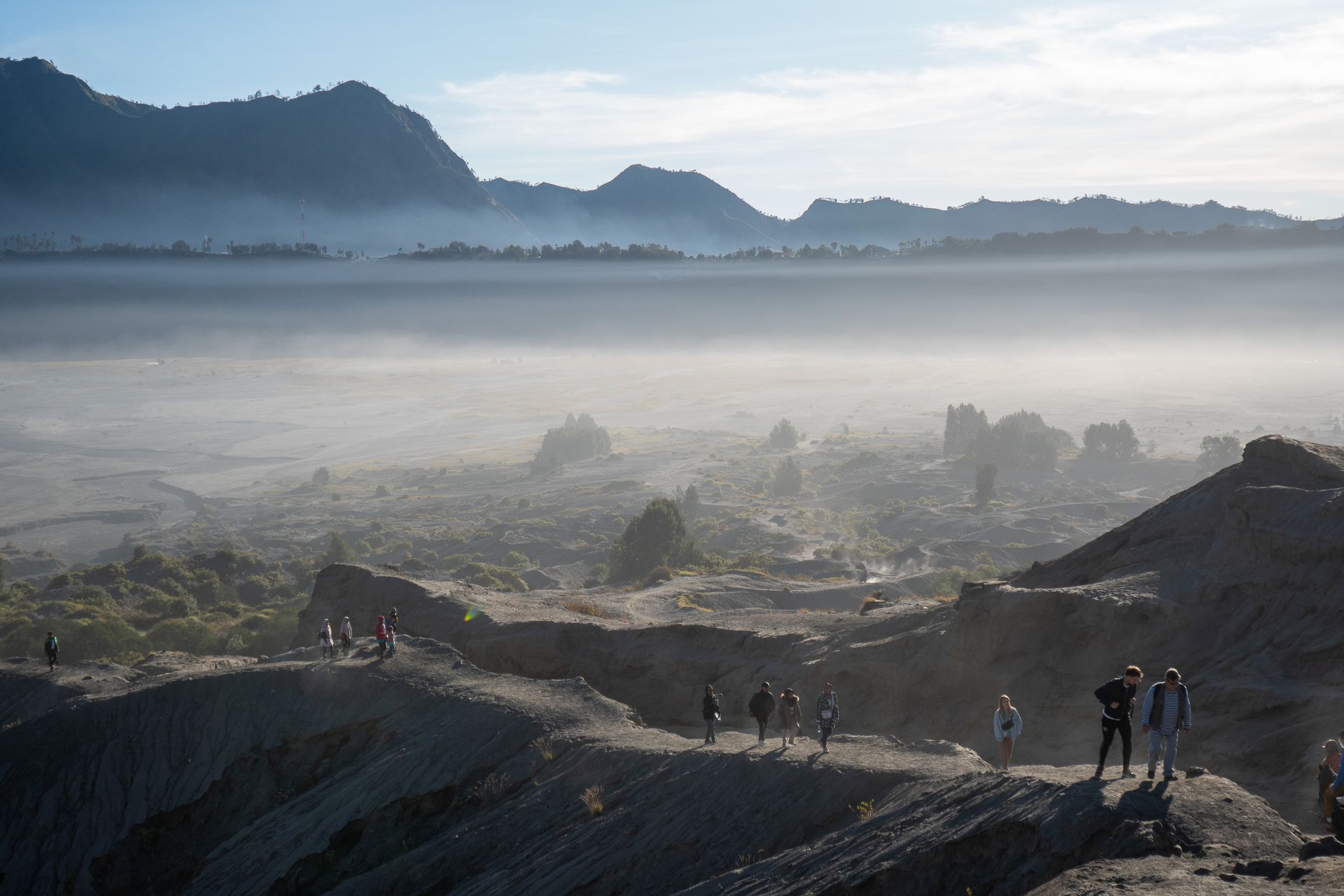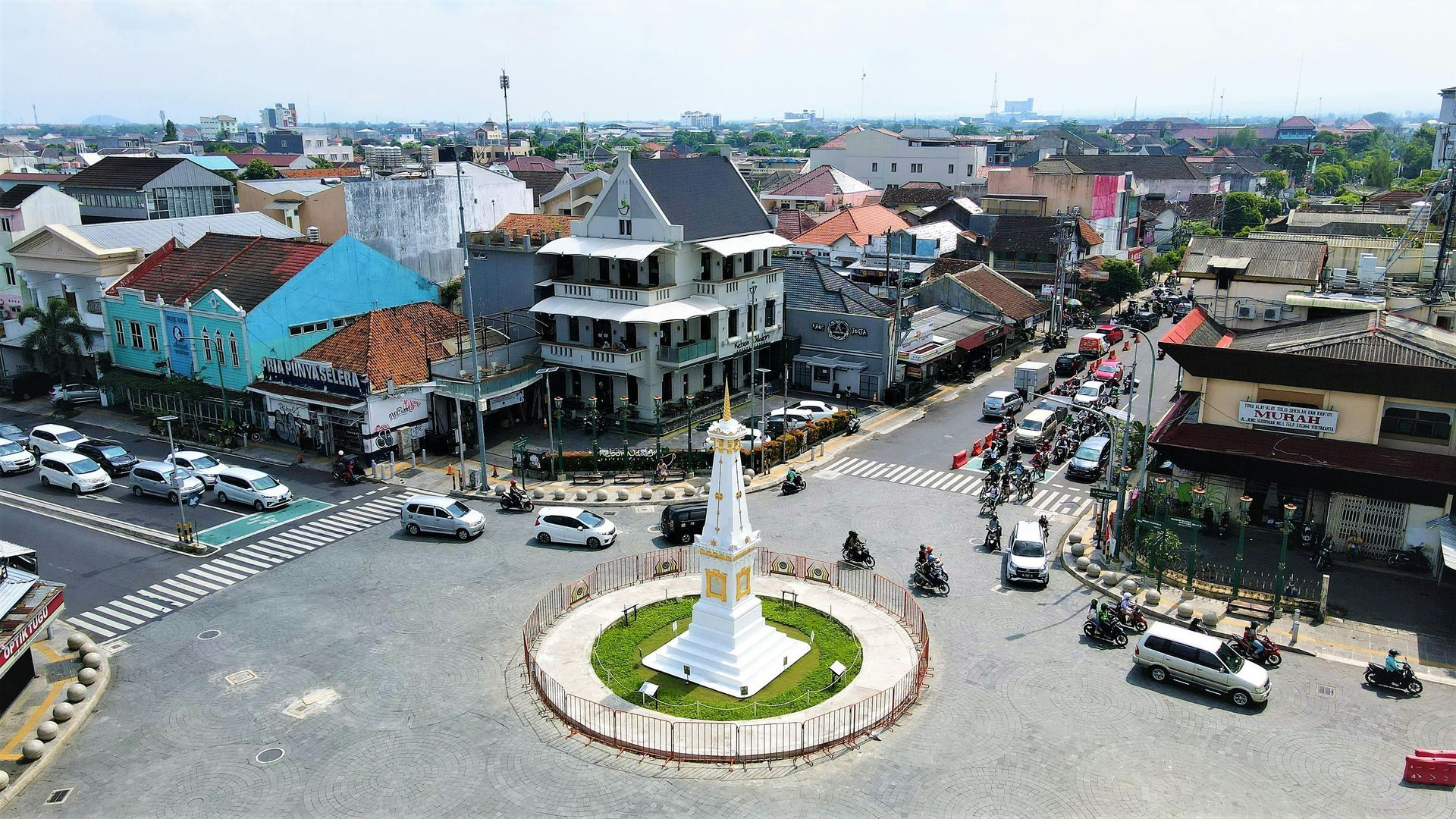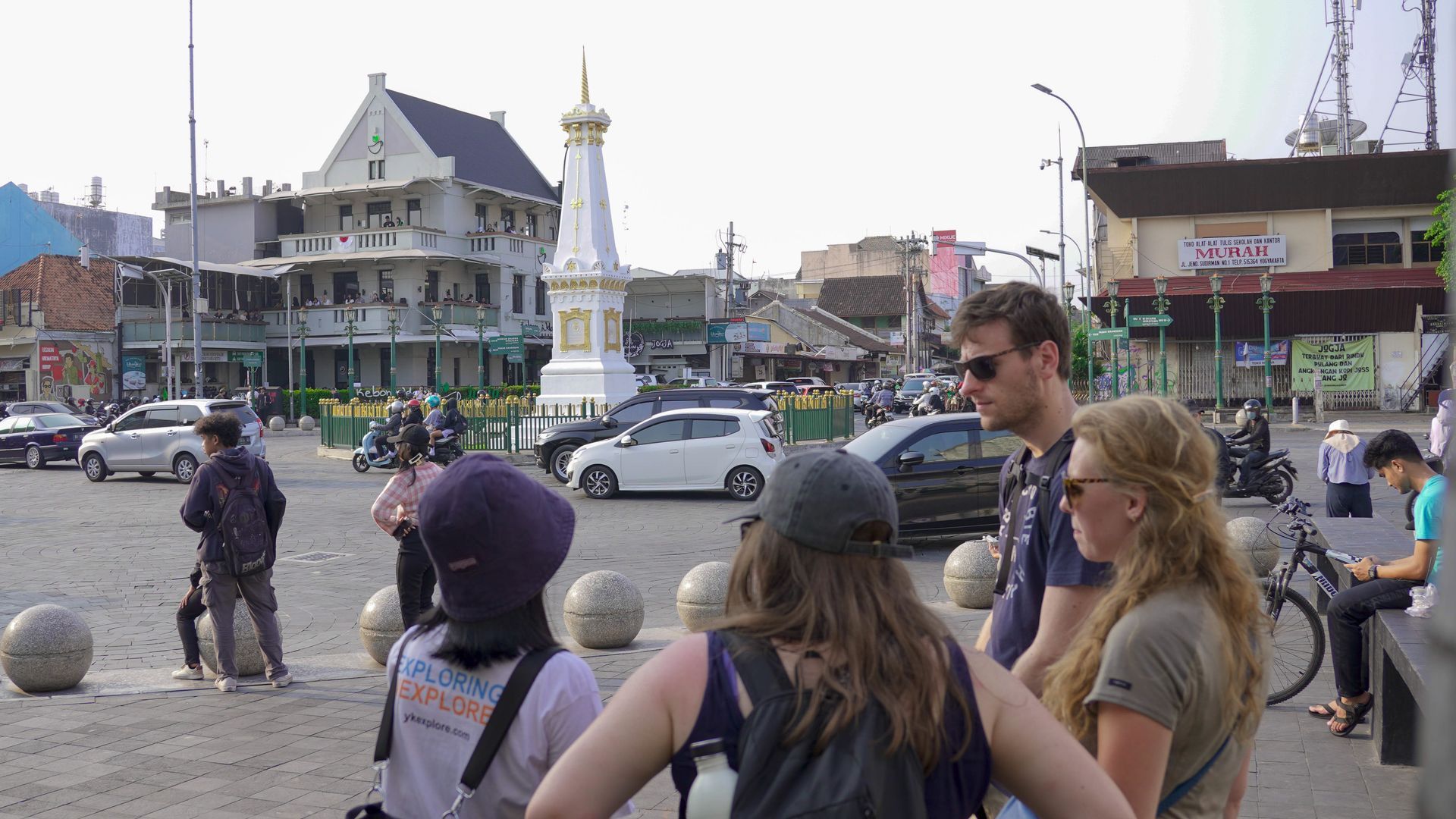Borobudur Temple : Syailendra Period's Influence
Borobudur Temple: A Testament to Syailendra Architecture
Borobudur stands as a monumental testament to the architectural prowess of the Syailendra dynasty. Nestled in Central Java, this 9th-century marvel is the world's largest Buddhist temple. Its grandeur reflects the cultural zenith of the Syailendra period, a time of significant artistic and architectural achievements.
The temple's intricate design is a fusion of Javanese and Indian influences. This blend showcases the cultural exchanges that flourished during the Syailendra reign. Borobudur's construction involved thousands of skilled artisans and laborers, highlighting the advanced engineering of the era.
The temple's layout is a mandala, symbolizing the universe in Buddhist cosmology. Its reliefs and statues narrate the life and teachings of the Buddha. These artistic elements offer insights into the beliefs and daily life of ancient Javanese society.
Abandoned in the 14th century, Borobudur was rediscovered in the 19th century. Its restoration underscores the importance of preserving cultural heritage. Today, Borobudur is a UNESCO World Heritage Site, attracting millions of visitors annually.
The temple's enduring legacy continues to inspire and educate. It remains a symbol of Indonesia's rich historical and cultural tapestry. Through Borobudur, the Syailendra period's influence on Java and beyond is celebrated and remembered.

The Syailendra Dynasty: Shaping Java’s Golden AgeNew Paragraph
The Syailendra dynasty rose to prominence in Java between the 8th and 9th centuries. This era marked a golden age of cultural and architectural development in the region. As patrons of Buddhism, the Syailendras played a pivotal role in spreading Buddhist teachings throughout Java and beyond.
Their influence extended beyond religion. The Syailendra rulers championed significant architectural projects, with Borobudur being their crowning achievement. This grand temple exemplifies the dynasty's commitment to monumental construction and artistic excellence.
During this period, Java became a center for trade and cultural exchange. The island's strategic location facilitated interactions with traders and scholars from India, China, and other parts of Southeast Asia. These interactions enriched the cultural and artistic landscape of Java, as seen in the art and architecture of the time.
The dynasty's accomplishments include:
- The construction of monumental Buddhist temples and stupas
- Patronage of art and literature, reflecting Buddhist and Hindu influences
- Facilitating trade and cultural exchanges that promoted regional prosperity
The legacy of the Syailendra dynasty is evident in the sophisticated art and architecture they left behind. Their monumental buildings and intricate sculptures reveal a high level of artistic skill and craftsmanship.
The Syailendras were not only builders but also visionaries. They understood the power of architecture as a means of religious expression and cultural communication. Their projects, like Borobudur, were symbolic representations of their devotion and prosperity.
The decline of the Syailendra dynasty was gradual. Political changes and the rise of Hindu kingdoms in Java contributed to their fall from power. Yet, their influence persisted, embedded in the cultural and spiritual tapestry of the region.
Even today, the achievements of the Syailendra period continue to captivate historians and tourists alike. Through their architectural marvels, the dynasty's contribution to Java's history is celebrated and remembered, offering a glimpse into a glorious past.
The Historical Context: Java Before and During the Syailendra Period
Prior to the rise of the Syailendra dynasty, Java was a land of diverse cultures and kingdoms. It was a melting pot of influences from India, China, and local traditions. Each kingdom had its own customs and beliefs, contributing to a rich cultural tapestry.
By the 7th century, Indian influence began to play a significant role. This influence brought Hinduism and later Buddhism to the island. Java's rulers and elites were particularly receptive to these religions, integrating them into their own traditions.
As the Syailendra dynasty emerged, they embraced Buddhism wholeheartedly. This marked a shift in religious focus, with the dynasty dedicated to the construction of Buddhist monuments. These projects were not just expressions of faith, but also demonstrations of power and prestige.
During this time, Java's economy flourished. Trade routes with neighboring regions prospered, and the island became a hub of commerce. The wealth generated supported the dynasty's ambitious building programs, including the construction of Borobudur.
Key aspects of Java during the Syailendra period included:
- A transition from Hinduism to a focus on Buddhism
- Flourishing trade networks across Southeast Asia
- Architectural advancements and monumental construction
The Syailendra period was characterized by peace and stability, allowing art and architecture to thrive. The rulers used their resources to sponsor various cultural endeavors, leaving a lasting impact on Java's history.
This era set the stage for future developments in architecture and religious expression. The cultural and religious achievements of the Syailendra dynasty laid the groundwork for future civilizations in the region. This enduring legacy is evident in the art and structures that continue to draw global admiration today.
The Construction of Borobudur: Vision, Labor, and Materials
The vision behind Borobudur was a monumental one. Initiated by the Syailendra dynasty, it aimed to symbolize spiritual enlightenment. The temple's conception involved both religious and political motivations, showcasing the dynasty's dedication to Buddhism.
Constructing Borobudur was a massive undertaking. Thousands of workers, including skilled artisans and laborers, participated in the project. Their combined efforts were essential to completing such an ambitious structure.
The labor force worked under challenging conditions. Despite limited technology, they displayed remarkable ingenuity. Ingenious methods of transporting and shaping stones showcase their skills and determination.
Materials for Borobudur came primarily from the surrounding landscape. Volcanic stone from the nearby Merapi volcano was utilized extensively. This choice was both practical and symbolic, reflecting local resources.
Key elements in Borobudur's construction include:
- Utilization of volcanic stone
- Precision in architectural design
- Skilled craftsmanship and intricate carvings
The temple's design involved a meticulous layout. It required precise calculations to align the structure with cosmic principles. Architects of the time demonstrated advanced engineering skills, reflecting the dynasty's intellectual prowess.
Each aspect of Borobudur's construction tells a story of collaboration. It embodies the synergy between rulers, architects, and artisans. Together, they achieved an architectural masterpiece that continues to amaze.
The success of Borobudur lies in its harmonious blend of function, form, and faith. Its enduring beauty is a testament to the vision and dedication of those who built it. As a physical embodiment of spiritual beliefs, Borobudur stands as a timeless symbol of human ambition and creativity.
Architectural Marvels: Design and Symbolism of Borobudur Temple
Borobudur's design is a fusion of art, religion, and architecture. It stands as a magnificent example of synergy between form and function. The temple embodies deep spiritual meanings aligned with Buddhist teachings.
The temple's structure consists of nine stacked platforms. The layout includes six square platforms at the base. Above these, three circular platforms elevate towards a central dome.
Atop the temple sits a massive central stupa. This dome is the spiritual center, symbolizing enlightenment. Surrounding it are 72 smaller stupas, each housing a Buddha statue.
Key architectural features include:
- Nine stacked platforms: six square, three circular
- Central dome and surrounding stupas
- 2,672 relief panels and 504 Buddha statues
Borobudur is rich in symbolism, reflecting Buddhist philosophy. The design elements represent the path to spiritual awakening. Ascending the temple mimics the journey toward enlightenment.
The temple's orientation aligns with astronomical directions. This alignment symbolizes harmony with the cosmos. The architects applied sacred geometry in their calculations and design.
The structure embodies a mandala, an intricate spiritual symbol. The mandala layout mirrors the universe in Buddhist cosmology. It guides pilgrims on a symbolic journey from earthly existence to nirvana.
Borobudur's artistry extends beyond architecture. Its relief panels and statues exemplify exceptional craftsmanship. These intricate carvings depict stories from Buddha's life and teachings.
The temple is an essential part of Java history. It represents the peak of the Syailendra dynasty's cultural achievements. This architectural marvel continues to inspire awe and reverence in its visitors.
The Mandala Layout and Buddhist Cosmology
Borobudur's layout reflects the mandala concept. A mandala is a spiritual symbol representing the universe. This design guides visitors on a metaphorical path to enlightenment.
The temple comprises concentric square and circular platforms. This arrangement illustrates the cosmic order in Buddhist thought. It symbolizes the universe's structure and the journey to spiritual fulfillment.
Each level of Borobudur is significant. The base represents the earthly realm, or Kamadhatu. As visitors ascend, the platforms signify advanced spiritual states.
The circular platforms reflect Rupadhatu and Arupadhatu, higher realms. Rupadhatu symbolizes form or material existence. Arupadhatu represents the formless, a step closer to enlightenment.
The journey through Borobudur involves intricate symbolisms. As one ascends, distractions of the worldly life fall away. The top represents pure enlightenment and universal consciousness.
This spiritual architecture connects body and mind. Pilgrims experience physical ascent mirrored by spiritual progress. Borobudur thus embodies Buddhist cosmology within its design.
The Three Realms: Kamadhatu, Rupadhatu, and Arupadhatu
Borobudur's structure represents three spiritual realms. These are Kamadhatu, Rupadhatu, and Arupadhatu. Each level expresses fundamental Buddhist beliefs.
The Kamadhatu is the world of desires. It includes the temple's base and represents human attachments. This level depicts earthly life and its inherent suffering.
As one ascends, they reach Rupadhatu, the world of forms. This realm symbolizes detachment from desires but retains form. Here, structures are square, indicating organization and stability.
Higher still lies Arupadhatu, the formless world. This realm captures the essence of formlessness and spiritual purity. Circular platforms symbolize purity without form.
Each realm has distinct architectural and symbolic features. The journey illustrates progression from the physical to the spiritual. It's both a physical and symbolic ascent for pilgrims and devotees.
The central stupa crowns Arupadhatu, representing ultimate enlightenment. Symbolically, it embodies nirvana and liberation from worldly constraints. This final ascent signifies unity with the cosmos.
Pilgrims engage deeply with these spiritual concepts. Borobudur's design invites contemplation and introspection. It stands as a testament to the transcendent power of human belief and creativity.
Artistic Mastery: Reliefs, Statues, and Iconography
Borobudur is not only an architectural wonder but also an artistic masterpiece. Its walls and balustrades are adorned with thousands of narrative relief panels. These panels cover the entire temple, offering a window into ancient wisdom.
The reliefs at Borobudur depict various narratives. They illustrate the life of Siddhartha Gautama, who became the Buddha. Additionally, they portray scenes from Jataka tales and other Buddhist scriptures.
Each panel serves as a visual scripture. The carvings unravel the teachings and philosophical insights of Buddhism. Through this meticulous artistry, Borobudur becomes an expansive visual encyclopedia.
Embedded within Borobudur are 504 Buddha statues. These sculptures emphasize the temple's spiritual purpose. Each Buddha is depicted in different mudras, or hand gestures, symbolizing aspects of Buddhist teachings.
These artistic elements highlight the craftsmanship of the Syailendra artisans. They utilized local volcanic stone, meticulously carving intricate details. Their skills contributed to Borobudur’s grandeur and timeless beauty.
Key artistic features include:
- Narrative relief panels depicting Buddhist stories
- 504 Buddha statues with diverse mudras
- Intricate carvings of mythological and everyday life scenes
Iconography in Borobudur is rich and profound. Symbolic designs reflect Buddhist concepts of karma and samsara. The artwork guides pilgrims, providing a meditative experience.
The temple’s art acts as a spiritual guide through its teachings. Visitors gain insights into moral lessons and ethical teachings. This dialogue between art and observer enhances Borobudur’s sacred journey.
Thus, Borobudur stands as a monumental gallery. It preserves cultural narratives, artistic traditions, and spiritual legacies of ancient Java. The temple’s artistic mastery continues to inspire and educate generations.
Borobudur in Decline: Abandonment and Rediscovery
Borobudur thrived during the Syailendra dynasty's golden age. However, its grandeur began to fade in the 14th century. This decline coincided with the spread of Islam in Java.
As the island embraced new religious traditions, the temple was abandoned. Borobudur's isolation grew amidst lush, encroaching vegetation. For centuries, it lay hidden under layers of volcanic ash and jungle growth.
Rediscovery came in the 19th century. When British colonizers, led by Sir Thomas Stamford Raffles, took an interest. Raffles initiated the temple’s excavation, bringing Borobudur back to the world’s attention.
This rediscovery sparked global curiosity and scholarship. Borobudur's forgotten magnificence captivated historians and archaeologists alike. Efforts to study and restore the temple began in earnest, acknowledging its importance as a heritage site.
Regaining its stature, Borobudur resumed its role as a cultural landmark. Its rise from obscurity highlights the enduring allure of its ancient legacy. Today, it stands as a testament to the resilience and timeless beauty of its architectural and spiritual past.
Restoration and Preservation: Safeguarding a World Heritage Site
The restoration of Borobudur began in the early 20th century. Initial efforts aimed to stabilize and preserve the temple’s unique structure. These early attempts laid the groundwork for more comprehensive projects.
A significant restoration effort occurred from 1975 to 1982. This project was a global endeavor, with UNESCO and international funding playing key roles. Such collaboration underscored Borobudur's universal cultural importance.
Preservation of Borobudur is a continuous task. Challenges include environmental threats like volcanic eruptions, which periodically cover the temple in ash. Additionally, concerns about climate change and tourism impact preservation efforts.
Important measures for safeguarding Borobudur include:
- Ongoing structural assessments and maintenance
- Protective measures against environmental damage
- Careful management of tourism to prevent wear
Such steps ensure the temple remains an enduring treasure for future generations. Efforts have raised awareness about the need to preserve cultural heritage worldwide.
Preservation of Borobudur speaks to a broader commitment. It reflects an appreciation for history and the importance of cultural memory. As these efforts continue, the temple remains a beacon of human achievement, resilience, and artistry.
Borobudur’s Enduring Legacy: Influence on Java and Beyond
Borobudur stands as a cornerstone of Southeast Asian heritage. Its architectural and cultural influence extends far beyond Java. The temple showcases the creativity and depth of ancient Javanese society.
Borobudur's design elements have inspired other structures across the region. Temples in Southeast Asia, such as Angkor Wat, echo its architectural style and spiritual symbolism. This cross-cultural influence highlights the exchange of ideas and traditions.
The temple's legacy is not limited to architecture. It also embodies artistic mastery through its intricate reliefs and statues. These artworks offer insight into ancient beliefs, social structure, and the daily life of historical Java.
Borobudur continues to be a source of inspiration. Its impact is evident in:
- Modern Indonesian architecture and sculpture
- Academic research in historical and cultural studies
- Cultural pride and national identity in Indonesia
This influence underscores Borobudur's importance as both a historical artifact and a living tradition. The temple connects the past with the present, fostering a deeper understanding of cultural heritage.
In this way, Borobudur remains a vibrant testament to human endeavor. It links ancient wisdom with today's world, forging a bridge between epochs. The temple's legacy continues to inspire and inform, reaching beyond geographical and temporal boundaries.
Borobudur Today: Pilgrimage, Tourism, and Cultural Identity
Borobudur remains a vital spiritual and cultural hub. Today, it serves as a pilgrimage site, drawing Buddhists from around the world. These visitors seek enlightenment and connection with the sacred.
Tourism plays a significant role in Borobudur's current identity. The temple attracts millions of travelers each year. Visitors marvel at its grandeur and intricate details, fostering a global appreciation for Java's history.
The site also holds cultural importance for Indonesians. Borobudur embodies national pride and cultural heritage. It stands as a symbol of unity and shared history, resonating with diverse communities across the nation.
Borobudur's influence extends to various aspects of life. It impacts:
- Economic growth through tourism-related activities
- Educational initiatives focused on history and conservation
- Cultural festivals celebrating heritage and traditions
Through these activities, Borobudur continues to shape Indonesia's cultural narrative. It links past achievements with present aspirations, maintaining its status as a UNESCO World Heritage Site. This ensures Borobudur’s enduring relevance and safeguards its role as a beacon of cultural identity.
Conclusion: The Syailendra Period on Borobudur and Its Place in World Heritage
The Borobudur Temple stands as a majestic testament to the Syailendra dynasty's architectural genius. Built in the 9th century, it embodies Java's golden age of culture and artistic achievement. This period marked a pinnacle in architectural innovation and spiritual devotion.
The temple is more than a physical structure. It symbolizes the rich exchange of ideas and cultures across Southeast Asia. Borobudur's design merges Indian influences with indigenous Javanese elements. This unique blend underscores the region’s historical openness to external ideas.
Borobudur's global significance is acknowledged through its UNESCO World Heritage status. As a heritage site, it represents universal values and promotes cultural dialogue. Its preservation efforts highlight the ongoing responsibility to protect human history.
In celebrating Borobudur, we recognize the legacy of the Syailendra dynasty. This legacy endures through the site’s influence on architecture, culture, and spirituality. The Borobudur Temple not only illuminates Java's past but also inspires future generations worldwide.
Ready to know more about Borobudur Temple Join With Us Check this Out
























